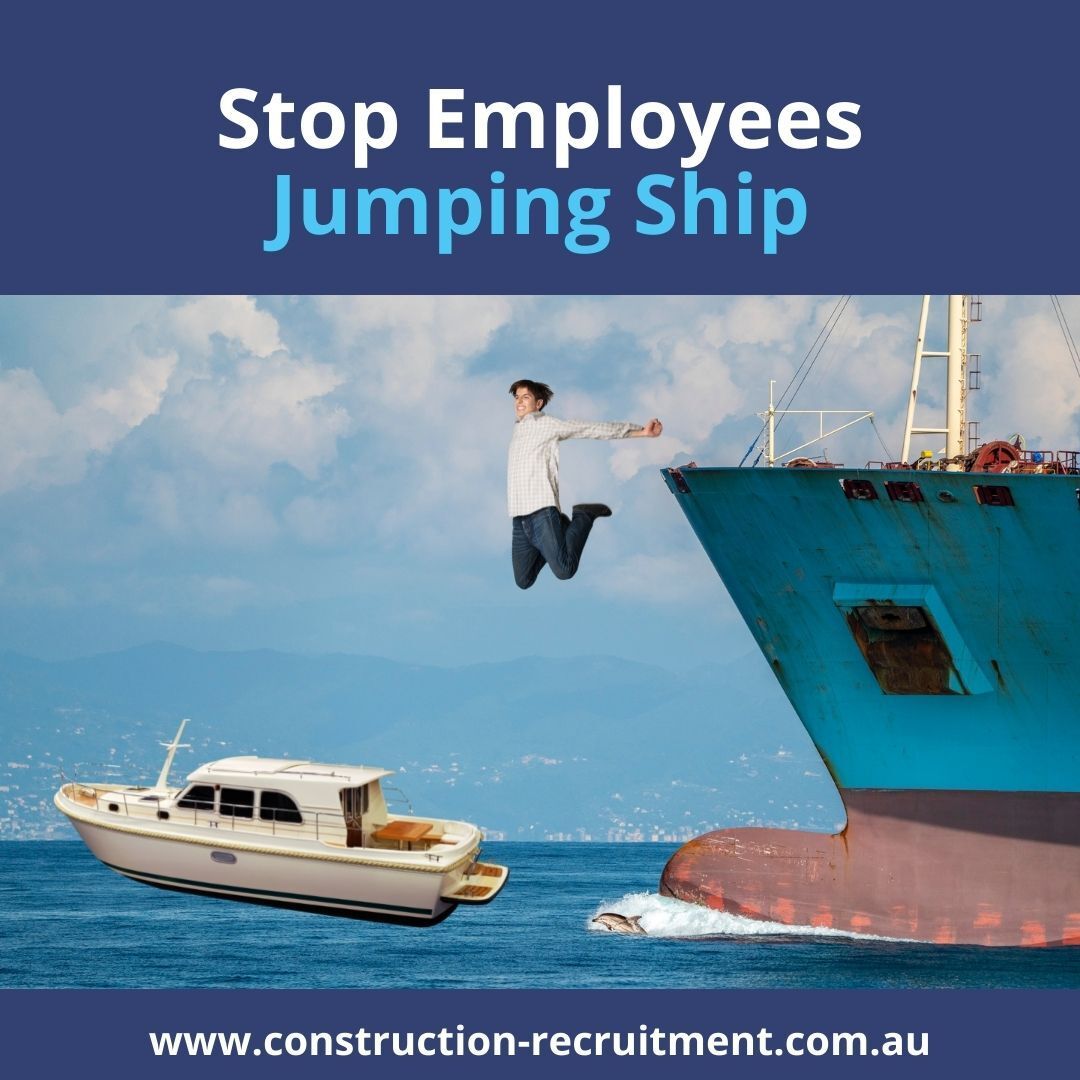Stop Employees Jumping Ship
Employee Retention and Attraction with Professional Development

Numerous studies have shown that organisations that offer growth opportunities are talent magnets.
The current research reveals that an employee is more loyal and committed to an employer they believe is interested in their growth and provides avenues to reach their individual career goals. Employees are 20% more likely to still work at their company in one year. Employees who don't feel supported are 3x more likely to be job searching.
The tricky thing is that growth means different things to different employees. Some feel that is promotion, a better salary package and others, learning new skills or the opportunity for external study.
This article looks at how employers become talent magnets, keep employees engaged, and attract candidates within this diversity of views.
The changing culture in organisations today is now leaning toward a 'people-first' approach. One that shows appreciation for employees and recognises the values and achievements they make for the greater organisation. For organisations, this means providing and including professional development initiatives to satisfy their current and prospective employees and demonstrate their value to the greater team.
Professional development in 2022 is no longer the sole responsibility of the individual employee. While the drive and results are undoubtedly the employee's responsibility, an employer also derives the benefit of learning and growth. It is in an employer's best interests to encourage and facilitate professional development opportunities, whether formal training, coaching, mentoring, on the job training. The benefits to the employee are apparent, but it also delivers significant benefits to the employer, including but not limited to:-
- It keeps the employee engaged;
- Employees are up with industry codes, compliance and best practices;
- The employer evolves through the growth of their employees;
- It aids career progression for your employees;
- It improves employee satisfaction;
- It enhances the culture of the employer;
- Employees become positive ambassadors for your organisation throughout their careers;
- It attracts further talent – in particular, high performers who love growth and PD;
- It reduces attrition and the risk of losing top talent;
- It reduces the risk of affecting profitability (costs estimated in replacing an employee is 33% of their annual salary);
While there isn't a one-size-fits-all solution to career development, the Harvard Business School recommends the following steps and strategies to implement effective career development at your organisation:-
Open Lines of Communication
First and foremost, the career development conversation should not be reserved for the annual review, and instead, it should happen at regular intervals and involve the right stakeholders. Weekly 1-2-1 meetings between managers and direct reports need to be the norm. The career development conversation is ongoing to discuss what an employee needs to accomplish their job in the coming period, what employees can do to grow their skills, and what extra opportunities they can take on.
Then, as extra projects will often be within different teams, communication between managers is also critical. Having everyone aligned when an employee is doing work for a different department keeps everyone on the same page with how an employee wants to spend their time and what is necessary to succeed in their current role.
Understand Your Employees' Motivations
A critical part of these ongoing career development conversations is understanding what your employees are trying to get out of their current roles. Is this position a means to an end? Are they trying to get to the next rung on the ladder? Are there particular skills they are looking to acquire to continue to be a specialist in this segment? Those are different things. Recognising what employees are hoping to get out of the position is the best way to provide support and stretch assignments that make sense.
Understanding your employees is knowing when to stop pushing if an employee is very happy in their role and isn't looking to move on. "Sometimes in our world, it's all about 'what's the plan?' and 'what’s the next step?’, but if an employee is happy, concentrate on keeping them happy and then connect in an agreed time.
Recognise Employee’s Strengths
Move from motivators to strengths and help employees recognise what they are great at and ways to do more of it. This vital step of pinpointing strengths can be achieved through assessments and conversations with attentive managers. Managers can help employees see themselves the way they see them by acknowledging both their strengths and weaknesses.
Be Thoughtful About Stretch Projects
With this understanding of strengths and motivators, managers can help employees demonstrate their strengths in their role, so they can start to prove they have what it takes for the role they want. The employee will typically need to pick up extra projects or get additional exposure to those not part of their jobs to show what they can do. The challenge is ensuring that ‘stretch projects’ don’t take away from the employee’s day job. Employees need to understand their obligation to their current role and team, and then the second part is growing their skills. Employees will figure out how to do this if they're really, really good. This does require active management by their managers.
Establish Transparent Paths to Success
Another strategy recommended for employers is to be transparent about the skills employees need to progress and spend a bit of time putting on paper the skills (hard and soft) required of people at each level. Make it clear what skills they need to be proficient at to move from a level up to the next level. With that in mind, an employee can start developing those skills and demonstrating them. Some employers also make it a point to communicate to employees that they need to be operating at the next level up for at least six months before being promoted. Determine your own criteria and make sure it is clear, so employees know what is expected and have a clear pathway.
It is also important to be transparent when there is no pathway forward for an employee seeking promotion. If it is not possible, be direct in saying that and discuss how the employee can get ready for that opportunity elsewhere. This can be hard, because you lose employees when you don’t have something that meets their developmental needs, but it is worth it in the end. Employees will feel supported, you buy time and can manage and plan for an exit, and your reputation stays intact as an employer of choice.
Seek Additional Help
For companies without in-house training, mentors or career coaches on staff who support career development at the group and individual level, there are external and internal resources and services you can tap into to serve your staff or train your employees. Some employers choose to have external industry trainers, or a mentor or career coach on retainer that employees can work with, or hire on an ad-hoc basis for discussions around career progression, professional development, and managing workloads.
Managers can also access training on effective leadership and coaching skills and how to develop leadership and management skills within their teams. It’s on the manager to understand any block in the way of the employee and help remove barriers so they can enable employees to put their energy into what matters most. This is a skill that can be taught and will ultimately help further the career development of your whole team.
Another option is a customised executive education program held on-site or at a university, or encourage employees to utilise approved universities that teach core skills, strategy, leadership, and giving and receiving feedback.
Key Takeaways
Career development is an important factor in employee satisfaction and retention as well as organisational success. To do it well takes attentive managers willing and able to invest in their people. It’s also a team effort that involves transparency at the organisational level about expectations and career pathways and open lines of communication among departments.
As you continue to support your employees’ career development, keep in mind these best practices:
- Open - and maintain - lines of communication
- Recognise employee strengths
- Be thoughtful about stretch projects
- Establish transparent paths to success
- Seek additional help from experts
RELATED ARTICLES
The 2022 War on Talent: Go into combat to retain and attract employees
How to Handle Multiple Job Offers: 5 Crucial Elements to Consider that Enhance Your Reputation
Loving Them As You Leave Them – 4 Things To Do: Cement Your Reputation When You Resign
CONNECT with us via our contact page or booking links on our website if you are looking to recruit for or land the ideal construction job in 2022.
#constructionrecruitment #construction-recruitment #successtogether #constructionjobsbrisbane #top20recruiters










